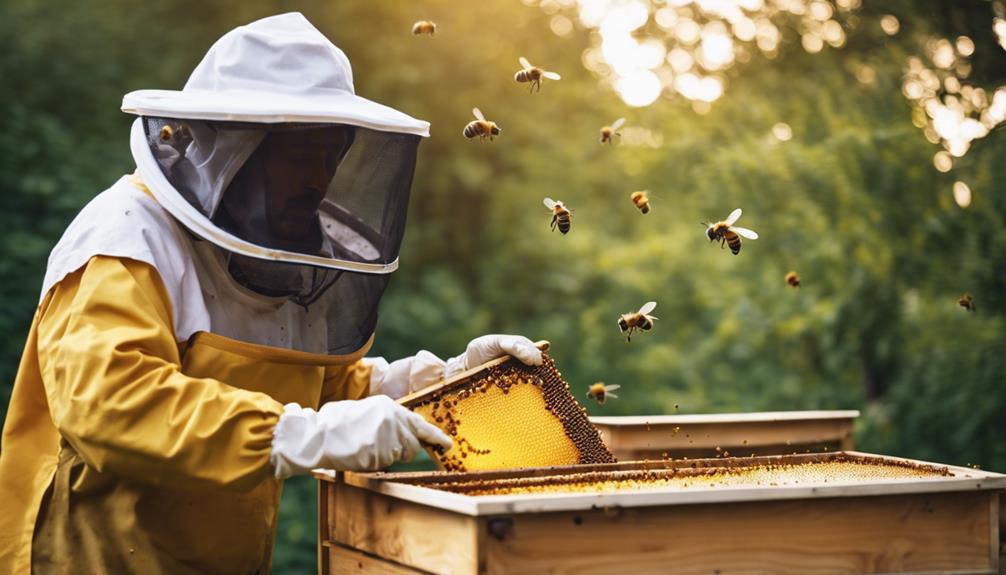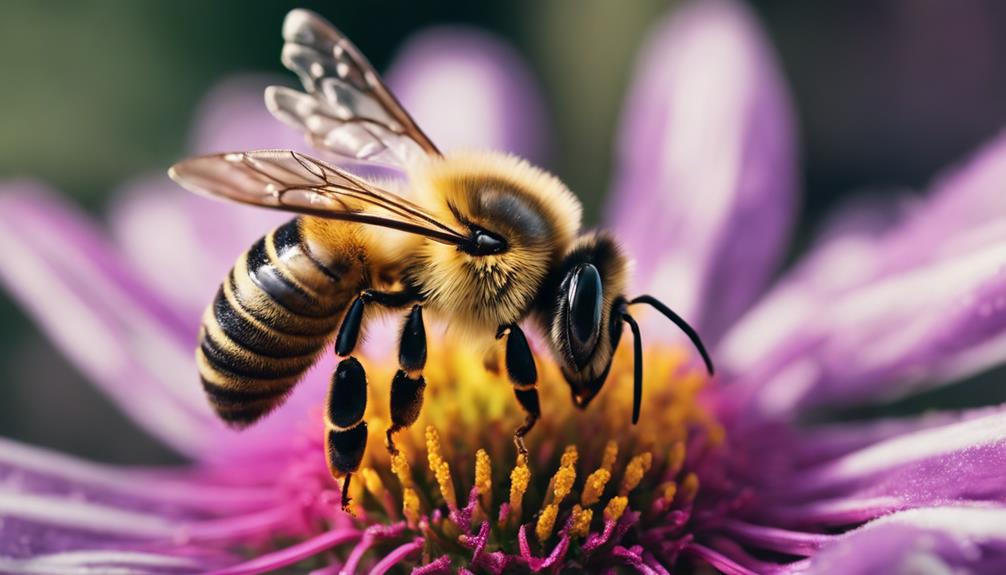In regard to the Flow Hive, our perspective is that it’s a mixed bag. The patented honey extraction system and bee-friendly design make honey harvesting easier and less disruptive. However, maintenance can be tricky, with concerns about frame durability and potential bee survival risks. If you’re curious about how these factors stack up and more, stick around to uncover all the ins and outs of the Flow Hive.
Main Points
- Streamlined honey extraction process
- Enhanced beekeeping experience
- Improved efficiency and pest management
- Modern features for convenience
- Sturdy build for long-term use
Flow Hive Technology Overview
Flow Hive technology transforms honey harvesting by enabling beekeepers to extract honey directly into jars using patented frames. This innovation allows us to savor the natural variations in honey, from color to flavor and aroma, with each harvest.
Unlike traditional methods that blend honey during extraction, the Flow Hive preserves the unique taste of each batch, offering a delightful experience for both beekeepers and consumers. Its user-friendly design makes it an ideal entry-level hive for beekeepers of all levels of experience.
Benefits of Using Flow Hive
Why should beekeepers consider the advantages of utilizing the innovative technology of the Flow Hive for their honey harvesting needs?
The Flow Hive offers a clean process for harvesting honey directly into jars with its patented technology.
Its aesthetic design fits well in various outdoor settings, enhancing the overall beekeeping experience.
By reducing the reliance on traditional extraction methods like extractors, the Flow Hive makes honey harvesting easy and efficient.
What’s more, it minimizes disruption to the bees, ensuring a smoother process for both beginners and experienced beekeepers.
With its ease of use and maintenance, the Flow Hive proves to be a valuable asset in the apiary, transforming how honey is harvested while prioritizing the well-being of the bees.
Drawbacks of Flow Hive
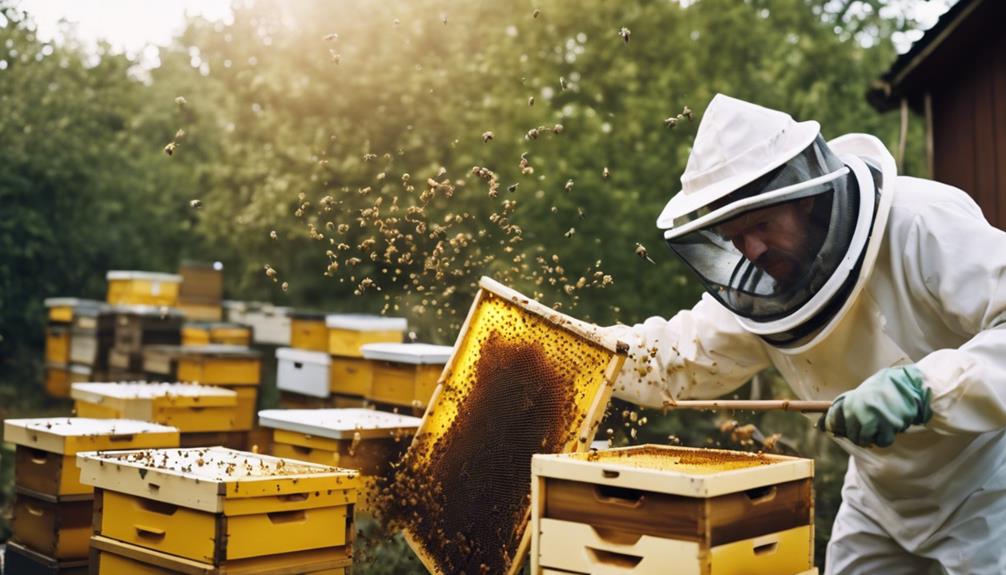
So, let’s discuss the drawbacks of the Flow Hive. Maintaining this hive can be a bit tricky, and harvesting honey mightn’t always go as smoothly as we hope.
Challenges like plastic frame durability and potential bee survival risks due to premature harvesting are definitely aspects to ponder before investing in a Flow Hive.
Flow Hive Maintenance
Maintaining a Flow Hive poses challenges due to the cedar wood construction and plastic frames, which may not offer sufficient insulation and durability, respectively. The hive’s cedar wood may struggle to insulate well in hot climates, impacting temperature regulation.
Additionally, the plastic frames in the Flow Hive mightn’t endure extreme heat, potentially leading to breakage issues. Bees could build comb in the vaulted top due to design flaws, affecting hive health.
Thinner wood used in the Flow Hive may provide inadequate insulation in various weather conditions. Cedar wood deterioration in specific climates could necessitate frequent maintenance and replacement, increasing long-term costs.
These factors highlight the importance of considering climate impact and maintenance costs when deciding if the convenience of a Flow Hive is worth it.
Harvesting Challenges
Flow Hive users may encounter various challenges during the honey harvesting process. Premature honey extraction can pose dangers to bee populations, affecting their food reserves and overall well-being. Bee intrusion during harvesting remains a concern, as it disrupts the natural flow within the hive. Additionally, the potential for bees to build comb in unintended areas, such as the vaulted top, adds complexity to the extraction process.
Cedar wood deterioration in specific climates and the durability of plastic frames under extreme heat conditions are also significant issues. These drawbacks highlight the importance of understanding the potential challenges associated with using a Flow Hive and taking proactive measures to mitigate any negative impacts on bee colonies and the overall harvesting experience.
Cost Analysis: Flow Hive Vs Traditional
When considering the cost of a Flow Hive versus traditional beekeeping equipment, it’s essential to break down the initial investment and long-term benefits.
The upfront price tag of a Flow Hive may seem steep, but its convenience and time-saving features could pay off in the future.
Understanding the cost comparison and potential advantages of each option can help beekeepers make an informed decision for their apiary.
Cost Comparison Breakdown
In considering the cost aspect, a comparative analysis between the Flow Hive and traditional beekeeping equipment reveals significant differences in initial investment requirements. When looking at the numbers, here’s what we found:
- The cost of a Flow Hive setup is around $800, while traditional hive equipment can be more challenging in terms of initial investment.
- Traditional hive components like frames, boxes, and tools may come at a lower initial cost compared to a Flow Hive.
- Additional expenses for Flow Hive accessories such as bee suits, tools, and maintenance should be factored into the overall budget.
- Beginners might find the upfront cost of a Flow Hive challenging, but long-term cost savings could come from reduced labor during honey extraction and potentially increased honey production.
These insights can help you make an informed decision based on your needs and financial considerations.
Investment Long-Term Benefits
Considering the long-term benefits of investing in beekeeping equipment, it becomes evident that the Flow Hive offers advantages that outweigh the initial costs when compared to traditional hive setups.
With the Flow Hive’s innovative design, honey extraction becomes a breeze, saving time and effort in the long run. This efficiency not only reduces labor but also increases honey production potential, making it a cost-effective choice over time.
While the upfront investment might seem steep, the convenience and ease of use that the Flow Hive provides can justify the initial cost. By opting for a Flow Hive, beekeepers can enjoy a more efficient honey extraction process, allowing them to focus on the joys of beekeeping while reaping the rewards of increased honey production.
User Experience With Flow Hive
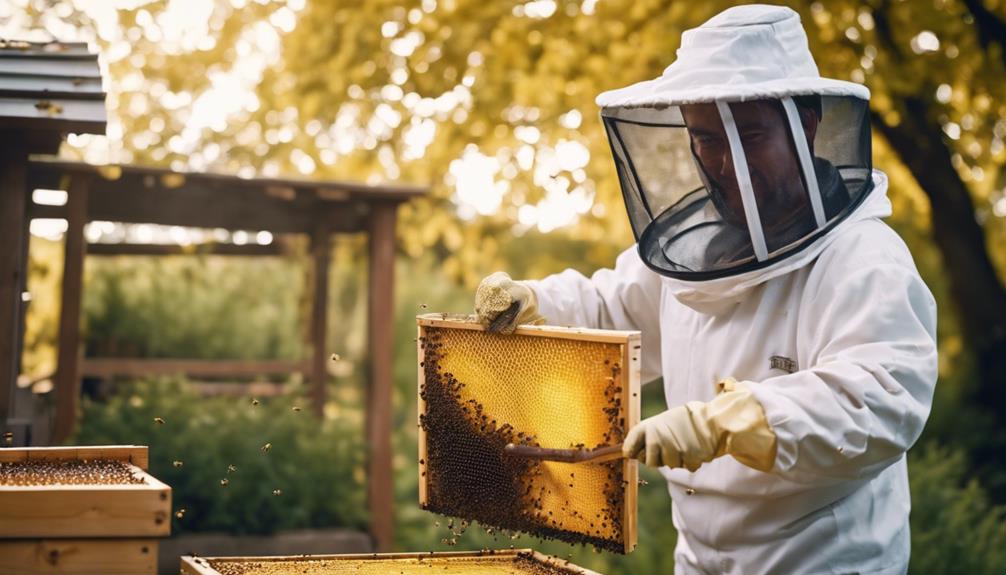
From firsthand experience, we can attest to the remarkable convenience and satisfaction that the Flow Hive brings to beekeeping enthusiasts worldwide. Here are some reasons why the user experience with the Flow Hive is highly regarded:
- Users appreciate the ease of harvesting honey directly into jars with patented Flow Hive technology.
- Over 300 5-star reviews reflect the positive user experience with the Flow Hive.
- The Flow Hive is widely used in over 130 countries, indicating its global popularity among beekeepers.
- Beginners and experienced beekeepers find the Flow Hive a great entry-level hive with easy honey extraction.
The natural nuances of honey flavors experienced through the Flow Hive add to the overall user satisfaction, making it a beginner-friendly and highly recommended choice.
Sustainability of Flow Hive
When discussing the sustainability of the Flow Hive, it’s important to highlight its significant impact on promoting eco-friendly beekeeping practices.
The Flow Hive not only reduces stress on bees during honey extraction but also plays a vital role in decreasing the carbon footprint associated with traditional harvesting methods. By supporting biodiversity through a clean and efficient honey extraction process, the Flow Hive stands out in sustainable beekeeping.
The use of materials like Araucaria wood and recycled polypropylene further underscores its commitment to environmental responsibility. Additionally, the durability and long lifespan of the Flow Hive make it a smart choice for those looking to minimize their impact on the planet while enjoying the benefits of clean honey extraction.
Comparison: Flow Hive Classic Vs Flow Hive 2
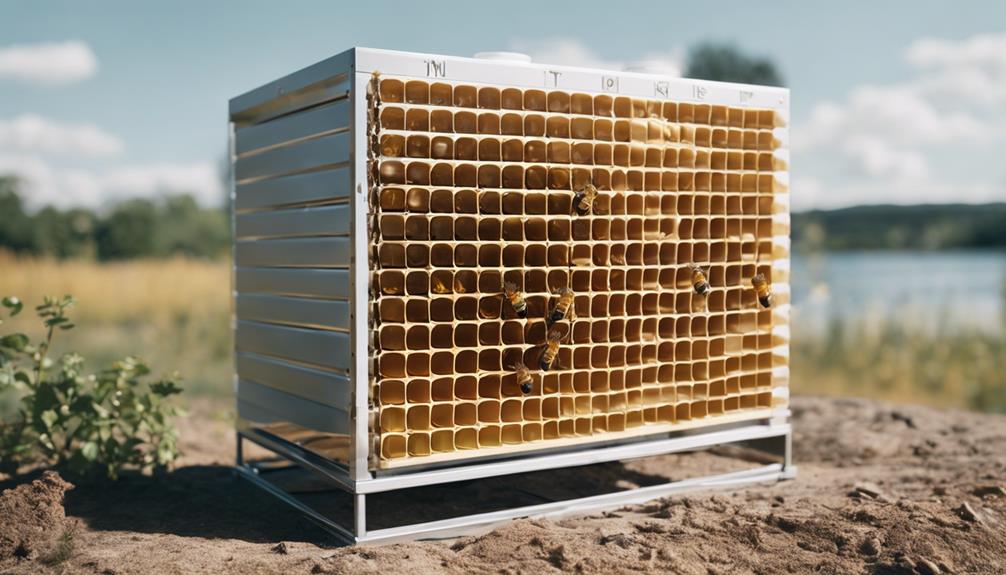
Highlighting the advancements in design and functionality, the Flow Hive 2 surpasses the original Flow Hive Classic in several key aspects.
- The Flow Hive 2 boasts improved design features for superior durability and efficiency.
- Its convenient harvesting system sets it apart, offering beekeepers a more user-friendly experience.
- Better pest management capabilities and hive observation enhancements make beekeeping easier and more productive.
- With advanced functionality and sturdy construction, the Flow Hive 2 is tailored to meet the needs of modern beekeepers looking for efficiency and ease of use.
These upgrades in the Flow Hive 2 not only streamline the harvesting process but also enhance the overall beekeeping experience, making it a worthy upgrade from the traditional Flow Hive Classic.
Maintenance Guide for Flow Hive
To guarantee the optimal health and productivity of your Flow Hive, it’s crucial to adhere to a consistent maintenance schedule. Regularly inspecting frames for mold, pests, and propolis buildup ensures your hive remains healthy.
After each harvest, clean and sanitize the Flow Frames to prevent contamination and maintain purity. Keep an eye out for any damaged or warped frames that may impede honey flow, promptly replacing them to keep the honey flowing smoothly.
Applying a protective sealant or paint to the cedar wood components improves longevity and weather resistance, safeguarding your investment. Additionally, maintaining a clear hive entrance and providing adequate ventilation helps prevent moisture buildup and reduces hive stress.
Tips for Maximizing Flow Hive Efficiency
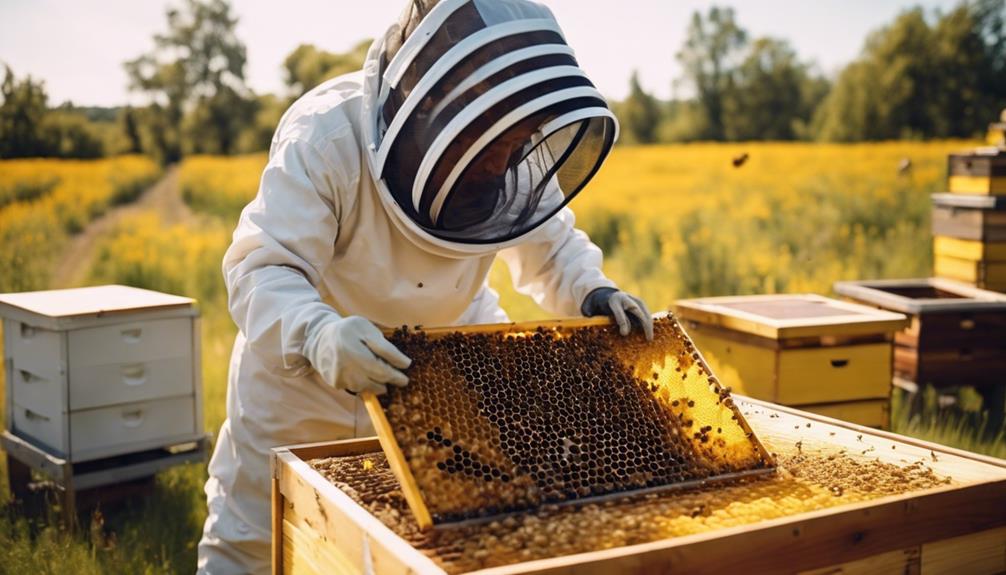
Inspecting frames regularly for honey readiness is key to maximizing the efficiency of your Flow Hive and ensuring peak honey production. To make the most of your hive, follow these tips:
- Proper Assembly and Maintenance: Guarantee all components are assembled correctly and well-maintained for peak performance.
- Monitor Hive Population: Keep a close watch on the hive population and health to know when to add more boxes for honey storage.
- Pest Management: Implement effective pest control strategies to protect the productivity of your hive.
- Accurate Honey Extraction: Use the Flow Key precisely during honey extraction to minimize disruptions and make the process smoother.

Hello! My name is Noel Calvin. I graduated from UCLA and now work as a writer at Launch Ninjas. I write blog posts that inspire and guide our readers in their entrepreneurial pursuits. I live in Pleasantville, NJ, with a peaceful yet lively atmosphere that inspires me.
Writing stories is more than just a job for me. It allows me to share my observations and satisfy my curiosity about the world. I combine my analytical skills with creative enthusiasm to delve into technology trends and startup stories. But my life isn’t limited to screens and keyboards. I value loyalty, passion, and a touch of old-fashioned charm, which I infuse into every narrative I create.
I love spending time in my garage, jamming with my band when I’m not writing. Playing the guitar and singing bring me immense joy. I also enjoy capturing ordinary and extraordinary moments through my camera lens and exploring new culinary adventures that excite my taste buds. I’m always seeking new experiences.
My family is very important to me. Joyful Sunday brunches filled with laughter and intense board game nights keep me grounded, reminding me of life’s simple pleasures.
In my world, every moment is an opportunity for discovery. Every discovery is a story worth sharing, whether a heartfelt moment at home or the pulse of technological innovations. Join me as I navigate through life, one blog post, one guitar strum, and one heartwarming family dinner at a time.
